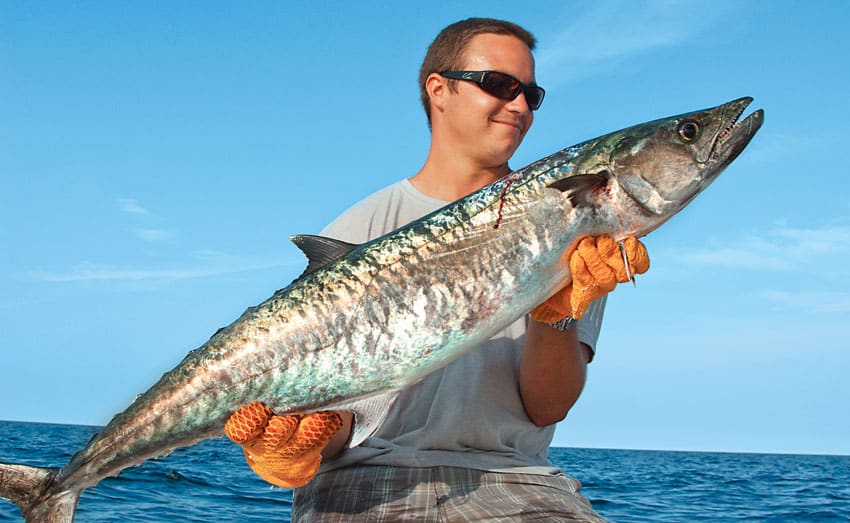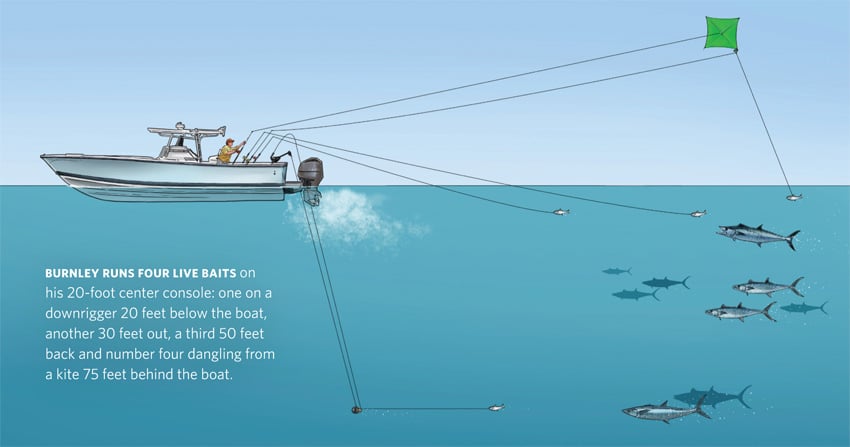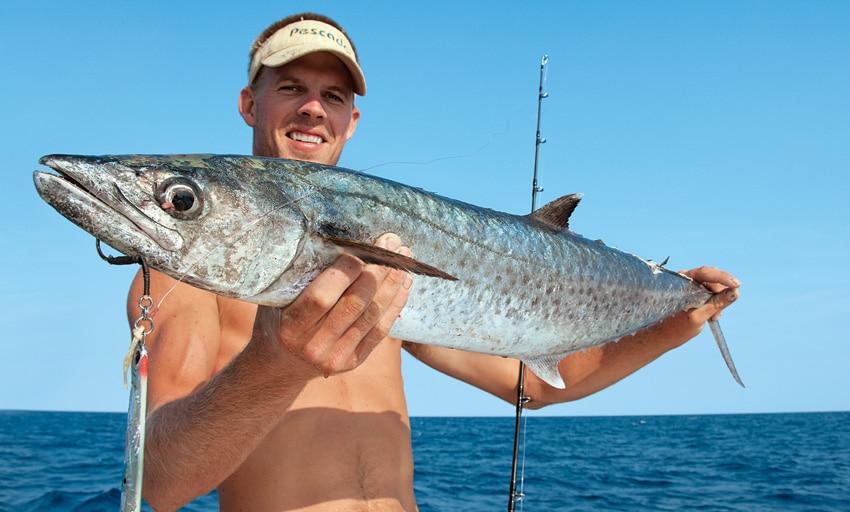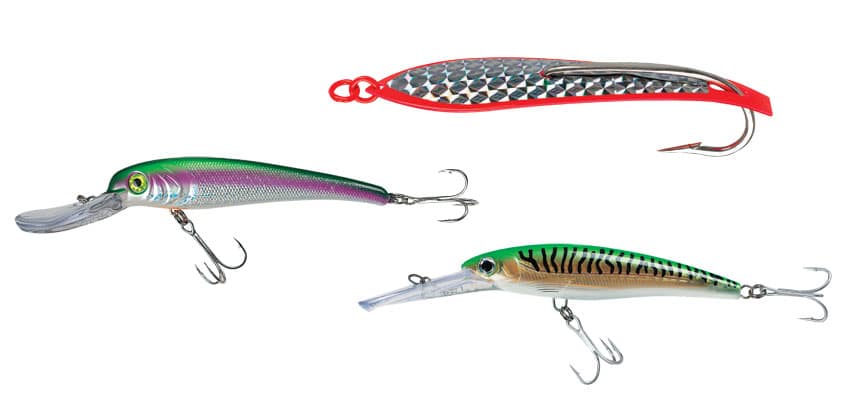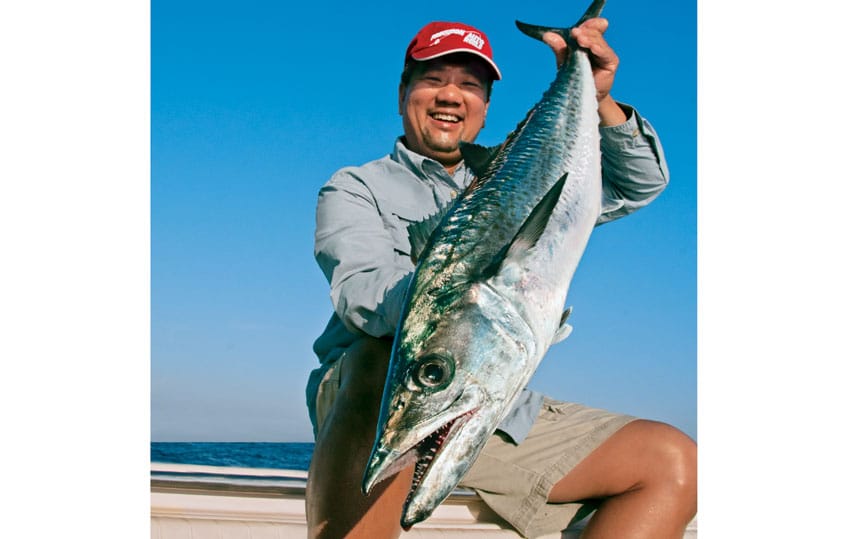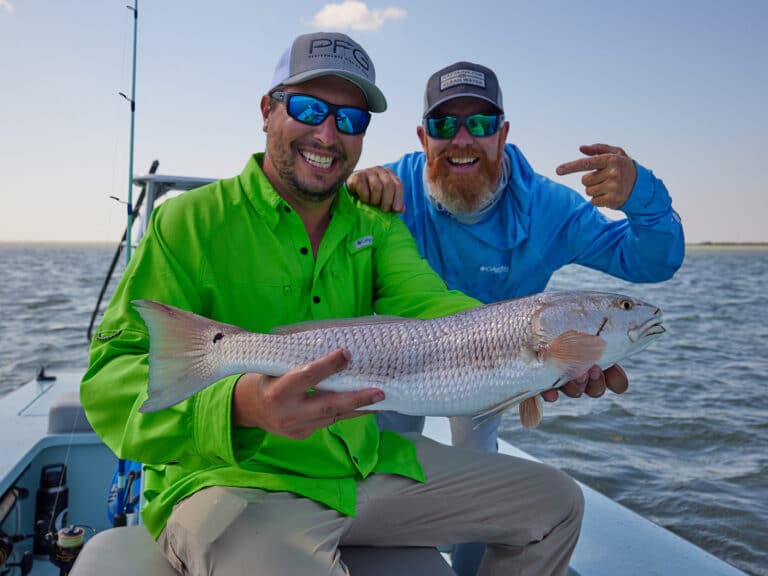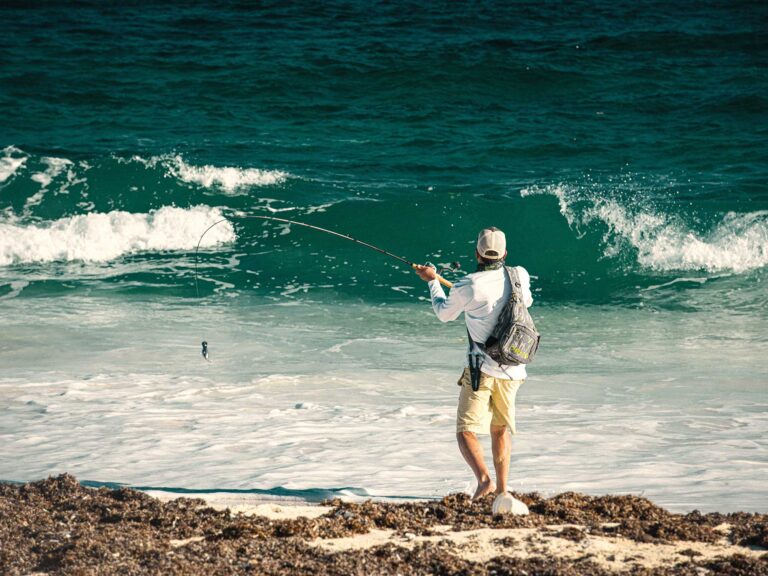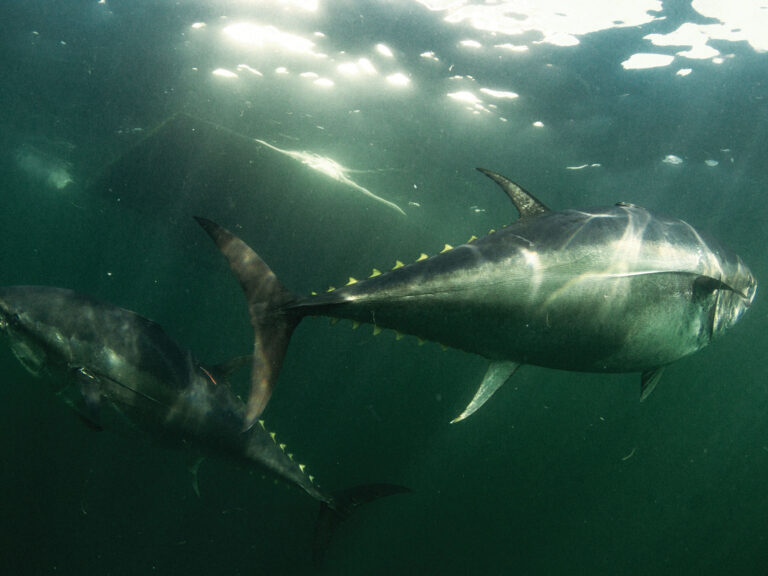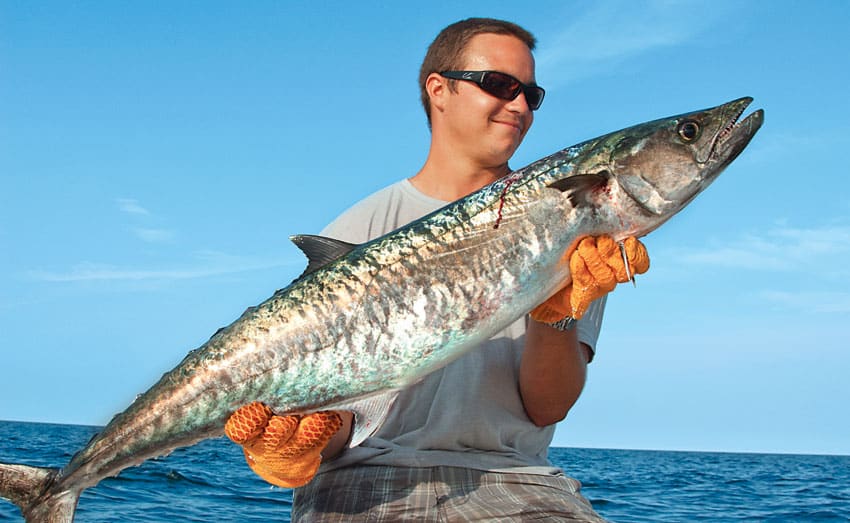
king mackerel main
Ahab chased Moby Dick, Santiago chased the brother fish, and last summer I chased king mackerel off Virginia Beach. While my pursuit may fall short of epic, catching a king at the species’ northernmost extreme is no fairy tale either.
It wasn’t always that way. There was a time when kings were plentiful enough off Virginia to support a thriving fishery and even a tournament stop on the Southern Kingfish Association tour. Then the bite dried up. In the early ’90s, the kings disappeared, and so did the kingfishermen.
That is until 2007, when Susan Smith set a new state record with a 63-pounder. Suddenly the kings were back, and I had to catch one. Spurred by stories of the good ol’ days and visions of skying smokers, I turned all my attention to catching a king mackerel off Virginia Beach.
Going Old School
My first move was to dig up some old-school advice. So I cornered Capt. Steve Wray at his tackle shop, Long Bay Pointe Bait and Tackle, and grilled him on his techniques.
Back in the day, Wray ruled the kingfishing scene. Not only did he place second in SKA’s Virginia Beach stop, but he was an integral part of the annual Virginia Beach Anglers Club King Mackerel Tournament.
“That’s what I did 15, 20 years ago, fish for king mackerel,” Wray recalled.
He told me of days gone by, when he could expect to catch a smoker each time he went kingfishing. “We were regularly catching fish over 40 pounds,” he remembered.
He started the day cast-netting large menhaden for bait. “Used to take one throw of the net, and you’d be set,” he said. “Then it got to where you’d spend three-quarters of the day looking for bait and never see any fish.”
Once Wray had bait on board, his first stop would be Cape Henry, at the mouth of Chesapeake Bay. “We started at the Green Can and worked our way out the tide rip to the CBJ line,” he says, describing Can G15 and the line of buoys that mark the shipping channel. From there he would head out the channel, looking for the clearest, warmest water he could find.
“Inshore wrecks were a good stop too,” Wray added, “and you would almost always find fish on Tower Reef.”
He also likes the stretch of underwater humps and valleys that pock the bottom from Rudee Inlet south to False Cape.
But all that ended over 10 years ago, when the kings abdicated from Virginia. “Where they went, I don’t know,” Wray said.
Then in 2007, the fish came back. Word got out about a few hard-core holdouts catching some impressive fish. In addition to a new state record, several other kings over 50 pounds were registered with the Virginia Saltwater Gamefish Tournament — including two caught on Sandbridge Pier.
The kings had returned.
New School
After my crash course in king mackerel history, I went looking for contemporary advice. One angler in on the renaissance from the start was Capt. Jake Hiles of Matador Sportfishing. Hiles was just a pup when the kings were last abundant in the waters off of Virginia Beach, but when the fish returned, he was one of the first to know about it.
“The bait came back, and so did the fish,” he explained. Both Hiles and Wray agree that huge schools of menhaden mean huge king mackerel for Virginia anglers. “Not only did the kings come back, but red drum and cobia fishing were fantastic too,” Hiles added.
Hiles first encountered kings early in the summer while targeting bluefin tuna on inshore lumps such as the Fishhook and Hot Dog. “They would pile on our ballyhoo baits and cedar plugs,” he said.
Later in the summer, the kings moved closer to shore, once again returning to their inshore haunts off Virginia Beach.
“You’re not going to catch a lot of fish,” he warned, “but the ones you catch will be big.”
Which is why I was excited about chasing kings off Virginia Beach. After talking with these two captains, I was even more fired up. But putting this advice into action took a lot of trial and a lot of error.
**
Graduation Day**
As soon as the first reports of big kings hit the docks, I was on the water at every chance. As Wray and Hiles projected, there were plenty of menhaden in the area. When the bait was close to the beach, we caught them with a heavy 10-foot cast net. When the schools of menhaden were in deeper water, we caught them with a snag rig: three 5/0 treble hooks tied in a 3-foot piece of 100-pound mono with a weighted treble hook at the end. Most days, we also caught small bluefish with a sabiki rig at the mouth of Rudee Inlet.
But even with the right bait and the right rigs, we still couldn’t seem to catch a king. I’d find the clean water. I’d find the warm water. I’d find the bait but not the fish. Other boats around us would catch. We’d see huge kings skying out of the water. But we couldn’t get lucky.
Then the dam broke. On a late August morning, with a hard northeast wind blowing down the beach, Lee Williams and I left Rudee Inlet with a livewell full of candy-bar bluefish.
We surfed a four-foot swell to the yellow B buoy off Sandbridge Pier. I slowed the boat, and Williams put out the baits. When we passed the buoy, a big cobia swam up to the boat, looking for breakfast. Williams used a medium-action spinning rod to cast a live spot to the brown suit.
The hungry fish gobbled down the bait, and the fight was on. While Williams managed the cobia, I kept the boat bumping ahead to keep the baits swimming along. In a few minutes, he had the brown fish circling below the boat, and I was standing ready with the gaff.
Maybe it was our fishy sixth sense, but for some reason, Williams and I took our attention off the cobia just in time to see a 4-foot silver missile launch itself into the air onto the flat line bait. The king landed like Louganis, sliced the bait in half and missed all six hooks.
“Ahhhhhh!” We turned to each other and screamed.
Williams horsed the cobia to the boat, and I put the gaff to it. We dumped the whole mess (fish, gaff, rod) into the cooler and closed the lid.
Meanwhile, the king slashed on our short line and then made a pass at the kite bait. We ran frantically from rod to rod, pulling hooks and missing strikes. Eventually the king gave up and left.
By the time we refreshed the baits, my pulse had almost returned to normal. No other inshore fish had ever brought me closer to an aneurysm.
It wasn’t long before we got another shot. This time the big king fell on the short bait, and the hooks hit their mark. Williams was on the rod again.
The fish took off on a smoking run followed by an impossible charge, then a surface show and, finally, a toe-to-toe battle — the whole repertoire. After the show was over, we had a 20-pound king in the box. We ended up landing another 20-pounder and losing a third fish that was way bigger.
For the rest of the summer and into early September, I chased kings with a fever. Almost every trip produced at least one fish over 20 pounds. Along the way, we caught cobia and even big red drum.
The king has returned; it’s just like the good ol’ days all over again.
**
Mid-Atlantic King Mackerel**
Slow trolling is the best way to fool a smoker king, but finding the fish often requires covering a lot of ground. When the fish are spread out, Hiles trolls Rapala Magnums in mackerel, Mann’s Stretch 40s in gold or silver, and Huntington Drone spoons in any color as long as it has reflective tape. He takes the boat at 5 to 6 knots around rips, color changes, bait pods and structure.
To guard against the king’s razor teeth, Hiles attaches an 8-inch piece of No. 5 wire between the lure and his 7-foot leader of 50-pound mono.
Once he hooks a king, he slows down and deploys five baits from 20 to 200 feet behind the boat. He favors a 7-foot rod with a light tip and a high-speed reel that holds hundreds of yards of 20-pound mono. He explained, “You want a whippy rod so that the hook doesn’t pull out of the bait.” The soft touch also keeps the king from pulling the hook on its initial smoking run.
Hiles uses a standard king rig but often places a small rubber duster before the front hook. “Throw out a bag of chum, and you’re in business,” he said.
Rods: Light-tipped 7-foot conventional.
Reels: High-speed with high line capacity, spooled with 30-pound low-visibility monofilament.
Lures: Mann’s Stretch 25 to 50 in gold or silver. Rapala Magnum in mackerel colors. Huntington Drone spoons with reflective tape.
Rigs: Double-hook king rig.
What: King mackerel.
_
Where:_ Virginia Beach, Virginia.
When: August and September.
Who: Cashing in on the return of the kingfish is something easily done from your own craft. You don’t need a lot of boat: A 20-footer works just fine. To help you get started right, consider enlisting the services of a local pro. Here are two who know the ropes.
Capt. Steve Wray
Ocean Pearl
757-237-7517
www.oceanpearlcharters.com
Capt. Jake Hiles
Matador
757-749-6008
www.matadorcharters.com
